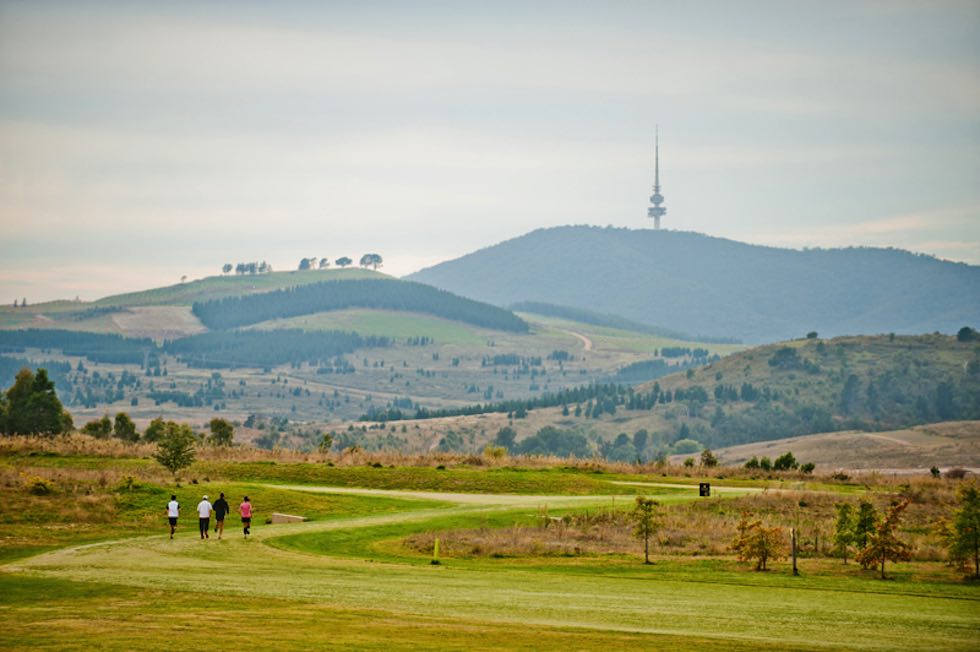A column by Len Johnson – Runner’s Tribe
I’m not really a road trip sort of bloke. Unlike Willy Nelson, I can wait to get on the road again.
The then almost-obligatory campervan trek around Europe 40 years ago excepted, I’ve rarely travelled, by road, more than one day at a time. My idea of a road trip has become something done by foot over a distance of 42.195 kilometres.
In my early adult years it was quite the thing to winter holiday on the Gold Coast. Still is, of course, but in those days preceding budget airfares, groups of young blokes packed into cars and drove the 1700 kilometres from Melbourne to Surfers Paradise virtually non-stop. Not me, however: my longest trip was a far more palatable Melbourne to Adelaide.
It was with some trepidation, then, that I set off from Melbourne almost two weeks ago to visit my brother at Port Macquarie on what is, I’m told, the New South Wales mid-North Coast. The South Coast, the Central Coast, the mid-North and North Coasts – surely, the cartographers had already plumbed the depths of imagination by the time they got around to naming the extensive tracts of coastline.
Anyway, it seemed an excellent opportunity to see one of the all-too-many parts of our wide country that I had never visited. The plan was to do the long haul from Melbourne to the north with one overnight stop then break up the return journey with further visits to friends in Sydney and Canberra.
Travel broadens the mind, they say: it also stiffens the back, an impact that became apparent at each meal or petrol stop as I covered almost 1300 kilometres in the first, two-day, stint.
For the runner, it also offers a variety of running experiences. Runs along the banks of the Wingecarribee River at Berrima in the NSW Southern Highlands, along the beaches and cliff tops of Port Macquarie, around the inner-urban Iron Cove in Sydney and through what has been restored of the Stromlo Forest in Canberra.
Berrima and Port Macquarie don’t share many obvious similarities, though both contain monuments to the shabby history of Australia’s first World War internment practices. People of German heritage – very few of whom could be seriously classified as security risks of any kin – were interned all round Australia.
The Berrima Court House and adjoining Gaol both date back to the 1830s. The gaol had closed by the early 20th century when it was reactivated to serve as an internment camp. The Germans confined there were a mixture of merchant marine personnel, executives of German companies operating in Australia and even a handful of prisoners from the sinking of the German light cruiser the SMS Emden.
When the penny dropped as to the real, rather than perceived, security risk, the prisoners were virtually given the run of the place, allowed to set up vegetable gardens around the gaol walls, inject their meagre allowances into local businesses and build their own boating and recreational facilities along the river (the latter forming the basis of a short, informative run along the banks).
It was a similar story at Trial Bay, a little way north of Port Macquarie. The beautiful – to the non-confined – sandstone building fell into disuse before internment gave it a new purpose. Again, as much as pose any threat, the inmates were guardedly welcomed and provided a benefit to the existing community.
Sadly, both sites were vandalised and, in the case of the Berrima constructions, largely destroyed once peace was restored.
It was also the tail end of whale spotting season. By this stage, the whales and their calves have moved further off-shore, so instead of actual sightings we had to make do with catching a glimpse of a spout or the splash of a breaching. In between watching out for whales and, at the same time, keeping a wary eye above for swopping magpies and on the ground – it was also brown snake season – it’s a wonder I didn’t wind up in the pacific at some stage.
Nothing that exciting in Sydney, except the path around Iron Cove is no completely paved, making it more accessible, better for cyclists, walkers and some runners, but leaving those of us who like a mix of surfaces a little downhearted.
Canberra’s Stromlo Forest had claims to be the epicentre of Australian distance running in the latter years of last century, with coach Pat Clohessy and world champion marathoner Rob de Castella at the head of the national capital pack. Stromlo, with its many kilometres of forgiving dirt tracks and hectares of pine plantation, was the main training venue.
‘Clo’ departed in the 1990s, ‘Deek’ got older but the heaviest blow to Stromlo came from the devastating 2003 bushfires which took several lives, destroyed hundreds of homes and virtually razed the forest.
The disaster prompted the ACT government to establish new suburbs as part of a wider buffer between populated areas and bushland in the ‘bush’ capital. Large tracts of the forest remained, but running there for the next few years was like running on the moon.
In that context, it was pleasing to find on this visit that, while still well short of its former glory (by 2003, most of the pine plantations contained mature trees), Stromlo was again recognisably a forest. The seedlings had become 10-15 year old trees, the tracks were softer underfoot again and you could pick out the skeletons of many of the old runs. I’m also still capable of punching out six-minute distance units though, sadly, the unit in question is kilometres now, were once it was miles.
I’m still not completely sold on the virtues of being ‘on the road’ again, but such pleasant surprises do wonders for the morale and make the journey worthwhile.





























